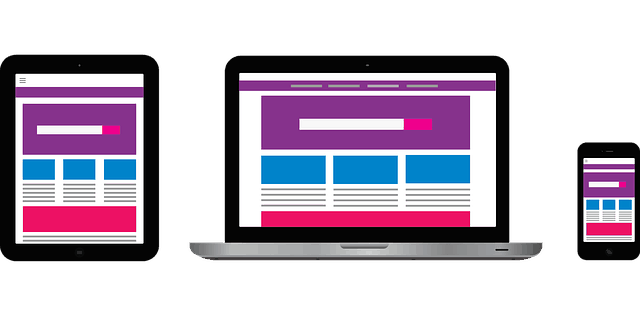Exploring The Pros And Cons Of Single-Page Websites

Are you considering creating a single-page website? If so, it’s important to understand the pros and cons of this type of design before diving in.
Single-page websites have become increasingly popular in recent years due to their simplicity and ability to create dynamic and engaging experiences for users.
On the positive side, single-page websites simplify navigation for users, creating a seamless and intuitive experience. Instead of clicking through multiple pages, users can scroll down one long page to find the information they need. This can be especially beneficial for mobile users who are often on-the-go and don’t want to spend time clicking through different pages.
Additionally, single-page websites can be visually striking and can create a cohesive branding experience. However, there are also potential downsides to this type of design, including SEO issues and slow load times.
It’s important to weigh these factors carefully before deciding if a single-page website is the right choice for your business or personal needs.
Key Takeaways
- Single-page websites are popular for their simplicity and dynamic user experiences, which create a cohesive branding and immersive experience.
- However, they may have potential SEO issues and slow load times, as well as a lack of content and keyword targeting opportunities.
- Designing effective single-page websites requires balancing content and visuals, evaluating content and design goals, and ensuring mobile responsiveness.
- Multi-page websites may be better suited for providing comprehensive information and offering more options and flexibility, depending on the content and design goals, as well as the target audience preference.
Understanding Single-Page Websites
Let’s dive into what a single-page website is and how it differs from a traditional multi-page site. Simply put, a single-page website is a site that contains all its content on one page. Instead of clicking through different pages to access information, users can scroll down the page to find what they need.
Single-page websites are often designed with a sleek, modern look that emphasizes simplicity and ease of use. One of the benefits of a single-page website is that it can provide a more immersive user experience. By keeping all the content on one page, users can easily take in all the information without having to navigate to different pages.
Additionally, single-page websites tend to have a faster load time since there are fewer pages to load. However, one drawback is that it can be difficult to optimize for SEO since there is only one page to target keywords and phrases.
Simplifying Navigation for Users
Simplifying navigation on a website can make it easier for you to find what you’re looking for, leading to a more enjoyable and efficient experience. Single-page websites do just that by providing a seamless and uninterrupted browsing experience.
Here are a few ways in which single-page websites simplify navigation:
- No more clicking through multiple pages: With single-page websites, all the information is available on one page, eliminating the need to click through multiple pages to find what you’re looking for.
- Streamlined design: Single-page websites are designed to be focused and concise, with all the relevant information presented in a clear and easy-to-understand format.
- Quick access to information: With single-page websites, you can quickly find the information you need by scrolling through the page, rather than clicking through menus and links.
- Mobile-friendly: Single-page websites are perfect for mobile devices as they provide a simple and easy-to-use interface that works well on smaller screens.
Overall, simplifying navigation is key to providing a positive user experience. Single-page websites do just that, by providing a streamlined and efficient browsing experience that is easy to use and mobile-friendly.
Creating Dynamic and Engaging Experiences
You can create an immersive and captivating website experience that will keep your audience engaged and excited about your brand. Single-page websites allow you to tell a story through scrolling, with each section building upon the previous one to create a cohesive narrative. This can be especially powerful for brands that have a strong visual identity, as you can use animations, videos, and other dynamic elements to create an emotional connection with your audience.
To evoke emotion and create a memorable experience, consider incorporating a table like the one below:
| Column 1 | Column 2 | Column 3 |
|---|---|---|
| Emotion 1 | Image or video related to emotion 1 | Call to action related to emotion 1 |
| Emotion 2 | Image or video related to emotion 2 | Call to action related to emotion 2 |
| Emotion 3 | Image or video related to emotion 3 | Call to action related to emotion 3 |
| Emotion 4 | Image or video related to emotion 4 | Call to action related to emotion 4 |
| Emotion 5 | Image or video related to emotion 5 | Call to action related to emotion 5 |
This table can be used to showcase your brand’s personality and values, while also providing a clear path for your audience to engage with your products or services. By using dynamic and engaging elements like this, you can create a website experience that is not only informative, but also emotionally resonant and memorable.
Potential SEO Issues
One potential issue to be aware of when it comes to SEO is the lack of content and keyword targeting opportunities on a single-page website. Since all the content is on one page, it can be difficult to target specific keywords and phrases that potential customers may be searching for. This can result in lower search engine rankings and less visibility for your website.
Additionally, single-page websites may not have enough content to satisfy search engines. Search engines prefer websites with a lot of content that is relevant and informative. Without enough content on a single-page website, search engines may not see the website as authoritative or valuable to users. This can make it difficult for the website to rank well in search engine results pages, which can lead to fewer visitors and less traffic.
Dealing with Slow Load Times
If your website takes too long to load, your potential customers will quickly lose interest and move on to your competitors. This is especially true for single-page websites, as they tend to have more content and features that can slow down the loading process.
To prevent this from happening, here are a few things you can do:
- Optimize your images: Large images can significantly increase the loading time of your website. Make sure to compress them without compromising their quality.
- Minimize HTTP requests: The more HTTP requests your website has to make, the longer it will take to load. Minimize them by reducing the number of scripts, stylesheets, and plugins you use.
- Use a Content Delivery Network (CDN): A CDN can help distribute your website’s content across multiple servers, reducing the loading time for users in different locations.
Designing for Mobile Responsiveness
Designing a mobile-responsive website is crucial for businesses to stay competitive in today’s digital landscape. With the majority of internet users accessing websites through their mobile devices, it’s important to ensure that your website can adapt to different screen sizes and resolutions.
A mobile-responsive website not only provides a better user experience, but it also helps with search engine optimization (SEO) and can increase your website’s visibility.
To design a mobile-responsive website, you need to consider various elements such as font size, image size, and navigation. It’s important to prioritize the most important information and make it easily accessible on smaller screens.
You may also need to simplify your website’s design and eliminate any non-essential elements to improve load times on mobile devices. By designing a mobile-responsive website, you can ensure that your website is accessible to a wider audience and that you’re meeting the needs of your customers in today’s mobile-first world.
Balancing Content and Visuals
When you’re creating a website, it’s important to find the right balance between your content and visuals to keep your audience engaged. Too much text can overwhelm and bore visitors, while too many graphics may distract from the message you’re trying to convey. Striking the right balance between these elements can make all the difference in creating an effective and appealing single-page website.
To help you determine the right balance for your website, consider using a table to organize your content and visuals. In the table below, you can see examples of how different websites have balanced their content and visuals. Use this as a guide as you plan your own website and experiment with different layouts until you find the perfect balance for your audience.
| Website | Content | Visuals |
|---|---|---|
| Example 1 | Minimal text that’s easy to read | High-quality photos that showcase the product |
| Example 2 | Short, concise paragraphs | Animated graphics that highlight key points |
| Example 3 | Bullet points that summarize information | Minimalist design with bold typography |
Deciding if Single-Page Design is Right for You
Determining whether a one-page layout is suitable for your website requires careful consideration of your content and design goals. To help you make the decision, here are some factors to take into account:
- Your content: If your website has a lot of content, a single-page design may not be the best fit. It can be overwhelming for users to scroll through a long page to find what they’re looking for. On the other hand, if your content is concise and can be presented in a visually appealing way, a one-page layout can be a great option.
- Your design goals: A single-page website can be an effective way to showcase a specific product or service. It allows you to focus on a single message and create a cohesive design that tells a story. However, if you have multiple offerings or want to provide detailed information about your company, a multi-page design may be a better choice.
- Your target audience: Consider who your website is designed for. If you’re targeting a younger audience who’re used to scrolling through social media feeds, a one-page design may be a good fit. However, if you’re targeting an older demographic who’re used to more traditional website layouts, a multi-page design may be more effective.
Ultimately, the decision to use a single-page design comes down to your specific needs and goals. Take the time to evaluate your content and design goals, as well as your target audience, to determine whether a one-page design is the right choice for your website.
Conclusion
So, should you go for a single-page website or not? It depends on what you want to achieve.
Single-page websites are great for businesses that want to showcase their products or services in a dynamic and engaging way, simplify navigation for users, and create an immersive experience. However, you need to keep in mind the potential SEO issues, slow load times, and the challenge of balancing content and visuals.
If you decide to go for a single-page website, make sure to optimize it for mobile responsiveness and keep the design simple yet visually appealing. Also, consider the type of content you want to showcase and decide if it’s suitable for a single-page design.
Ultimately, it’s important to weigh the pros and cons and decide if a single-page website is the right choice for your business.







